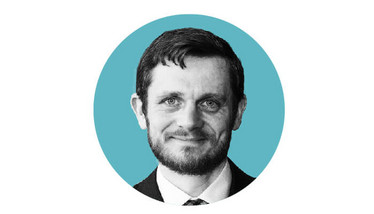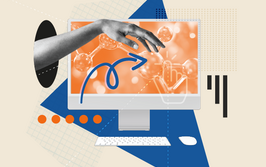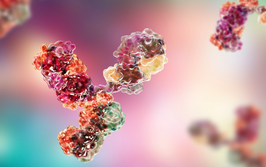
In the Land of the Living Logistics
Ideal drug manufacturing and logistic processes are closed and automated to eliminate the risks associated with human intervention and manual operations, but most cell and gene therapies are not yet at this stage. Here, we discuss the problems of handling living, breathing cells in transit, and ask a big question: are healthcare systems ready for cell and gene therapies?
In The Medicine Maker, we often discuss the challenges of scaling up and commercializing biologic drugs, such as monoclonal antibodies. Identifying the right set of conditions to get the highest titer possible, while ensuring there’s enough “wiggle room” should anything deviate, isn’t easy. But at least the cells are, in theory, identical, and there are established precedents to build processes upon. Cell and gene therapies are a whole new kettle of fish: every process is different because the cells are different, and companies are often inventing processes from scratch.
Developing and delivering cell and gene therapies necessitates the handling of living, breathing cells in transit – sometimes across great distances. You have to know exactly where your cells are at all times, who they belong to, and who has handled them. Often, you’ll have to coordinate the activities of multiple clinical centers too: condition the patient, book the bed, align your clinicians, and get the delivery in all at the right time. One mishap could mean a seriously ill patient missing their treatment, and the loss of hundreds of thousands of dollars’ worth of product.
Welcome to the world of cell and gene therapy logistics! Here, four esteemed experts in the field explore the challenges in more detail.

Matthew Lakelin - Chief Scientific Officer, TrakCel

Phil Vanek - General Manager, Cell and Gene Therapy Strategy, Cytiva

Heidi Hagen - Chief Strategy Officer and Co-Founder, Vineti

Simon Ellison - Cell & Gene Therapy Service Director, World Courier
What are the main challenges of translating lab-scale therapies into industrial-scale therapies?
Matthew Lakelin: Until fairly recently, cell and gene therapies were developed without scale-up (or scale-out) in mind. Starting material and the final therapy would always be transported fresh, with a limited shelf life, and there would be little time available to move the starting material into the manufacturing environment, and then get the therapy to the patient. This system wasn’t practical for much larger patient populations, scattered across a country – or even around the world. And that’s why developers have to think about cryopreservation – not just for autologous therapies, but also for starting materials. By nature, these therapies involve many manual steps, with several technical specialists and potential points of failure, so developers are having to think about manufacturing and logistics during development of the therapy itself.
Phil Vanek: Yes, these therapies are different in that they’re “manufactured” in laboratory settings, often involving flasks and disposable plastics, with many individual components and combined unit operations – very different to a large-scale GMP facility! To bridge the gap between a laboratory set up to GMP facility, companies must think about the most efficient and optimal means of bringing equipment and people together in a process that requires less skilled labor and results in lower risk. And that typically means more sophisticated equipment that is able to integrate the disparate steps.
Heidi Hagen: I believe there are four main challenges. The first is data management across the value chain. Cell and gene therapy success relies on secure data management as much as it relies on the physical management of the cell products. These types of therapies involve a wide array of data across a variety of stakeholders that must be retained and integrated for the sake of patient safety, customer service, regulatory compliance and product quality.
The second consideration is scale-out versus scale up. In traditional off-the-shelf therapies, the production process is developed and scaled up into larger mixing vats or bioreactors. This, combined with process optimization, provides an increase in production yield and requires only a limited number of manufacturing lots annually for thousands of patient doses. Autologous cell therapies, in contrast, are individual lot runs per patient and thus cannot scale up, but rather must be scaled out. The cell therapeutic manufacturers increase their production by adding more workstations to perform individual lot runs. Overall, the production systems and tools in the industry are still quite immature, but optimization of unit operation efficiencies and application of new process technologies should enable some scale up ability within the same footprint. However, there will be inherent limitations because of the minimum of a one-to-one ratio of lots-to-patient.
Third, companies must use operational systems that work globally. As described above, an increased volume of production will be enough of a challenge for companies. Globalizing these therapies exaggerates the challenges while adding other unique language, financial, and regulatory factors. To find solutions, the company must manage unique workflows, product labeling, and data requirements for each geographical region, while also ensuring that the data privacy requirements are met for those individual regions. Also, the product may move across borders and thus proper maintenance of the Chain of Identity (COI)/Chain of Custody (COC) becomes more challenging with greater risks involved.
Finally, cost and misaligned analytical technologies provide another major challenge. Because of the individualized nature of cell therapy production and the need to handle living, breathing cells in transit across sometimes great distances, these therapies are inherently expensive to produce – resulting in high price tags. Added to the manufacturing costs are the quality control tests and oversight of the product. If the production tools for cell therapy are considered to be lagging and immature compared with the groundbreaking science of these new cell therapies, then the analytical tools are even further behind. The tests for these single lot products primarily measure surface changes on the cell membrane and secretion of well-defined proteins rather than evaluating and quantifying the genetic modifications within the cell after production. The analytical tools must catch up so that the real changes to the cells can be measured and done so in an automated and in-line fashion.
Simon Ellison: There is a need to think about what future logistics platforms are going to look like, as early as possible within clinical development. A robust logistics platform connects patients to therapies, but without it critical shipments (e.g. donation) can be delayed (e.g. tied up in customs). This envisioning of future challenges is key to successful evolution from lab to industrial scale.
What are the main logistic challenges associated with cell and gene therapies – particularly CAR-T and other autologous therapies?
ML: The challenge with cell and gene therapies is that you can build a system that works perfectly: where all the handovers involve individuals who understand that they may be dealing with a patient’s last chance for life. But if you’ve got members of staff on holiday or a new courier driver, that’s when things can go wrong. And one mishap could mean a gravely ill patient missing their treatment. It’s not easy, but you must build clusters of understanding throughout the entire supply chain.
Another challenge arises because the supply model for these therapies tends to have one centralized manufacturing site, fed by multiple clinical centers, which means you must coordinate activities between the different clinical centers and standardize their approaches for taking starting material. This task is not easy, there will always be biological differences between patient’s starting material, but a key challenge is how to engineer out differences in starting material arising from the supply chain.
Thirdly, maintaining chain of identity/custody is a key consideration in cell and gene therapy logistics, which becomes more challenging when increasing the number of patients being treated. This is important for autologous therapies where there’s a risk of graft versus host disease if there’s any cross-contamination. Regardless of whether you use an electronic system or a paper-based system, it needs to be robust and able to ensure and record that each patient received the correct therapy.
PV: I agree; these are autologous or personalized medicines, connected to an individual, which means there needs to be absolute fidelity in the ownership of that sample – from the point of sample collection (whether it’s apheresis or another starting material) all the way through the various manufacturing steps to eventual administration. You need to know at all times to which patient a sample belongs to as well as when, where and who touched a product and what they did to it. Getting it wrong can be extremely risky for the patient, as Matthew mentioned.
HH: Complexity is a central challenge for cell and gene therapy logistics, especially when you consider the fact that the patient and healthcare provider are part of the supply chain. The production of the final product involves coordinating healthcare providers, the patient, the cell collection process, the transport, the manufacturing, and product administration in often tight timelines. And even when the timelines can be interrupted using a freezing method, and thus simplifying parts of the value chain, the patients who are receiving these products are very sick and also have very complicated treatment schedules, where the administration of the cell therapy must be done within certain time periods of other medicines being administered
Cells are the critical raw material and have complex biological processes that are not entirely understood by science. The entire supply chain requires specialized materials to maintain cells at their optimum and defined temperature and within the tolerances considered acceptable for product quality and safety. Some of these steps can be quite lengthy and certain unit operations can take days and/or weeks to complete and must also be done by well-trained professionals. Every cell therapy process is unique and the companies in the industry are still trying to find the “best mousetrap.” These therapies can sometimes cause severe side effects (for example, cytokine release syndrome) that require qualified medical personnel trained to be available for post treatment.
Finally, the coordination of value chain participants and activities is inherently difficult. The addition of real-world issues, such as scheduling patients into crowded apheresis sites, inclement weather, timeline changes due to patient health issues, and reimbursement data requirements increase the complexity to new levels. For small patient numbers and limited production volumes, it is complex, but with larger volumes in phase III clinical trials and beyond, the complexity and opportunity for error rises exponentially.
SE: The main challenge is that the entire healthcare supply chain is set up to land everything on a pin head. You’re conditioning the patient, doing the screening, booking the bed, aligning your clinicians, getting the delivery in – perhaps via international shipment – of a critical sample, all at a specific time. It only needs one of those things to change – for example, a patient is too sick to start their conditioning or for less serious conditions, the patient is late for their apheresis, or for a storm hits and delays flights – and it can alter the entire supply chain.
When the logistics go wrong
By Matthew Lakelin, CSO, Trakcel
I know of one case where a company was using date of birth and initials to verify the identity of the patients as part of their traceability network. They happened to have two patients with the same date of birth and initials. And one patient received the other patient’s treatment and became seriously ill as a consequence. You might say they were unlucky, but I would say they should have engineered out the mistake by having additional identifiers in their system.
Another interesting example is where a company lost around £800,000 worth of treatment because a parcel containing the drug substance (autologous, genetically manipulated cells) was left behind a reception desk over a weekend. The problem? The usual staff-member who dealt with deliveries was on holiday and the temporary replacement wasn’t aware of the importance of the delivery and treated it like an Amazon parcel. This story demonstrates that the final mile is really important and companies must have the right systems in place.
How can improvements be made to the supply chain?
ML: I think we need to develop a standard protocol for the collection of starting material, as it would make it much easier to open new clinical centers; staff would already be familiar with the protocol rather than having to be retrained. It would also help companies developing therapies as they would have a starting point, rather than having to reinvent starting material collection protocols for each therapy. Clearly, some of the more established companies may be resistant to such an idea, given that they’ve spent a lot of time and money developing and then training their procedures – and they may argue that those processes are part of their intellectual property. But standardization would be great for the industry and, more importantly, expedite access to these therapies to larger patient populations.
PV: As cell therapies are scaled up and out, you have to introduce inbound and outbound logistics, often involving a manufacturing site that isn’t located at the clinical center, which means every unit operation along the way has to scale. For a typical CAR-T process, an apheresis center may be handling tens if not hundreds of patients a week and as the process becomes more industrialized, it could become a major burden for the apheresis center. Having new standards and tools available to the apheresis center so that the process can be streamlined and simplified presents a major opportunity for improving cell therapy logistics.
And on the distribution side, as the therapy gets manufactured, packaged and cryopreserved for distribution back to the clinical center, there’s another opportunity for better integration. By which I mean, integration of standards: making custody management software and approaches connect to all of the steps in the process, with complete custody and identity management.
HH: We also need better process characterization. These are complex biological entities (cells) in new types of processes. And although the industry in general is building its knowledge of this new class of therapy, we have a lot of work to accomplish before we truly understand what we are doing both at a cell functionality level and at a molecular/genetic level with these processes. It will be difficult to truly industrialize and/or optimize these processes until we understand the key attributes and know how to control them in the production processes.
Better analytical methods that go beyond cell expression/phenotypes and cytokine release of cell populations to the genomic level would also go a long way. We need better methods that interrogate the cells beyond the membrane. The most common means of analyzing a cell and measuring changes is via fluorescence-activated cell sorting (FACs) – also known as flow cytometry. FACs can determine what cell markers are expressed and how that expression may shift after certain manipulations. We need better and more real-time methods of measuring how a process may modify the genetics of the cells and how that relates to the cells’ phenotype, metabolism, and biological functions.
SE: There’s a lot governments can do to improve the infrastructure in place to deliver cell therapies. The UK’s Advanced Therapy Treatment Centers (ATTCs) are good examples of this. The four centers will cover the majority of the UK population; and the idea is to bring clinicians from various NHS trusts, academics, as well as companies like GE and Trakcel, together to solve the challenges associated with manufacturing and distributing cell and gene therapy products. By putting the key stakeholders in a room, the hope is that the knowledge gained can be applied across the NHS and also internationally.
A key barrier to building a seamless supply chain is the lack of communication between silos. Things can work seamlessly in the manufacturing center, within the courier and in the hospital ward, but the real risk arises during the transitions. That’s where the ATTCs may be able to bring people together to create seamless supply chains.
Another important concept that the industry needs to adopt is “logistics by design.” Building on the quality by design approach that is an established part of the process development mindset. Developers really need to be thinking about how they’re going to industrialize and commercialize their therapy as early as possible – as well as working with technical partners to make it a reality.
Where can technology help?
HH: I think digital management via cloud-based software platforms could bring great improvements. We need more tools to enable all the stakeholders to have easy access to their part of the process, as well as to allow for planning upcoming production and managing capacity. Further, paper processes are costly and error prone; not only are they ill-suited for this complex supply chain, but there is a limit to their effectiveness even at low volumes – and yet, some companies still use them.
ML: Indeed they do. It may seem obvious that introducing an electronic system is the way to go, but I know of at least one autologous therapy developer that uses a paper-based system for managing their patients. Each time their therapy is approved for use at a new treatment centre they have to increase the number of administrators. It isn’t scalable and eventually eats away at your budget, as well as slowing down development because of the time spent recruiting specialist administrators.
If you’re using a paper-based system, you’ll have multiple documents feeding into a central location from the various treatment centers. Having a single technological solution that centralizes that documentation will make document control much easier and reduce the chance of administrative errors. From a compliance perspective, it will also allow you to demonstrate that the people managing the patients have been trained and you’re only one mouse-click away from their profile showing what they can and can’t do or sign for. From a traceability perspective, an electronic system with barcodes reduces the risk associated with transcription errors (see sidebar). Electronic systems significantly reduce the number of admin staff required.
PV: Technology can help us make the unit operations more closed and thus less risky. For example, a clinical lab will have technicians, who use flasks and biosafety cabinets to perform manual manipulations. This is a completely open and labor intensive process where the technician could make a mistake. Not only that, but the technician will be required under GMP to record what they’ve done at every step of the process, which requires a significant amount of, often manual, data entry. Technology can help reduce the amount of human intervention – or touch points – involved in the process.
Infrastructure around the globe
Heidi Hagen, Chief Strategy Officer and Co-Founder, Vineti
As noted in the main discussion, different parts of the world may need to approach cell and gene therapies differently. The US conducts product approval and medical practice under one set of laws; the FDA has legal authority, while the interstate trade and labeling considerations are decided at the federal level. This alignment streamlines the product development and commercial launch process. However, the country is large, which creates a challenge for individual therapies; the product may need to be transported a great distance or to rural areas in short time frames. Because of this issue, and the current CAR-T side effect protocol, there is a geographical bias in the distribution map. In the US, reimbursement is also complex and driven by each individual payor.
The EMA, on the other hand, is a cooperative agency that approves products for all nation states, but local nation states have their own language, regulatory, labeling, and reimbursement requirements beyond the original EMA approval. So, upon approval of the MAA (Marketing Authorization Application), therapeutic companies must still navigate the individual country regulations and sometimes obtain additional approvals.
In Europe, therapeutic companies typically take a tiered and prioritized effort to where they will conduct clinical trials or launch commercially. The higher prioritized countries are those that are early adopters with strong KOLs and a favorable reimbursement process for new and innovative therapies (typically, Germany, France, the Netherlands, Italy, and Spain are top) and other countries (for example, the UK, Greece, Norway) will be at the bottom of the priority list or not considered targets at all. So, geography bias also exists in Europe, but for different reasons.
In China, the CFDA usually mirrors the FDA in compliance policies and inspection principles. Reimbursement is a standard process and, as with other processes in the country, is overseen by the government. The country is often considered the most progressive innovator in the field, and perhaps the most daring too. The large population of China and their penchant for being early adopters are motivators for both Chinese companies and global companies to develop cell therapy products there. It is considered a current hotspot for cell therapies, and as China does not accept such products from outside of its borders, the company and the manufacturing facility must reside within the country.
Do healthcare systems have the infrastructure in place to effectively deliver cell and gene therapies?
ML: There are some complex processes associated with administering or dispensing cell therapies. For example, it’s important to get cryopreservation right because there’s a risk that you might lose a half a million dollar treatment if you thaw the cells too quickly – or too slowly. There will need to be more pharmacies and staff able to cope with these complexities and accommodate the growing demand for cell and gene therapies.
HH: The majority of the medical centers that are approved to order (set up as an authorized prescriber by the therapeutic companies) and administer cell and gene therapies are motivated to use these products and want to be seen as leaders in the healthcare system. However, it appears that only about half of them have set up their own internal teams with defined procedures that enable the easy referral of qualified patients from other medical centers, proper data transfer to the order systems, patient support, and claims reimbursement procedures after infusion. Best practices for these internal medical centers are developing and should mature as these types of products begin to be more broadly administered and in greater volumes.
PV: Are they ready at the scale they’re operating at today? Yes. Would they be ready for a sudden influx of new therapies? Not immediately. I do not think apheresis centers would be able to adhere to different specific procedures for a large number of different therapies, nor would clinical centers be able to cope with 10 or 20 different protocols on how to prepare samples for administration. As the number of therapies grows, standardization, as Matthew said earlier, will become increasingly important.
Do you have an opinion on the centralized versus decentralized debate?
ML: The decentralized model is difficult from a regulatory perspective. To obtain local competent authority licensing for advanced therapy GMP manufacturing is challenging; so having a manufacturing facility located at each hospital is unfeasible at present, the complexity is exacerbated because for the decentralized model to be cost-effective these facilities must be able to manufacture several different ATMP products.
But the landscape may be different in ten years’ time. There are technologies being developed where you can attach vessels containing starting material to a closed system manufacturing unit and with the correct reagents and viral vector two weeks later you get a therapy. In a perfect world, closed automated systems like this could be distributed to every specialist hospital in a country, which would remove the need to transport starting material and drug products over long distances. And it would also require a fundamental shift in the way regulators think about these products. Perhaps the automated units would have to be licensed and approved as medical devices, with the viral vector classified as a medicinal product. Each individual hospital would then need a license to manufacture and you’d also need to monitor and compare manufacturing at all sites to prevent process drift, where different facilities might produce increasingly different products over time. So, there are a lot of hurdles to overcome, but decentralized manufacturing could solve a lot of logistical problems in the long-term.
PV: Philosophically, I’m agnostic as both models can work. It depends on the indication and the number of patients being treated. It doesn’t make much sense to have multiple small centers producing only one or two types of therapies. But if the number of therapies rises significantly, a central facility might not be able to cope. It comes down to the scale of production.
HH: Centralized manufacturing of cell therapy products must exist with the industry in its current state. These products are still being scientifically characterized and understood, and this will continue for some time until there is a much larger database from a larger volume of production.
The earlier point about process drift is a good one. And I think decentralized manufacturing will only take off when the quality and safety of these products can be easily assured without complex procedures being performed by specialized personnel. And when the average medical technician in a medical center can reproducibly perform the manufacturing process in an aseptic manner with the proper in-line quality control tests. The manufacturing processes, the equipment, the characterization data and the analytical methods must mature to the level of “plug and play” before decentralized manufacturing can occur safely and reproducibly in medical centers.
SE: It’s an interesting question and reminds me a lot of the autologous or allogeneic debate when I first got involved in the industry. It turned out that both were viable depending on the indication, patient population and geographical spread. I think the same will prove to be true regarding centralized and decentralized manufacturing models. A very important factor is the logistics platform. If you’ve got a cryopreserved inbound donation and a cryopreserved outbound donation, then it’s possible, in theory, to treat patients across the globe from a centralized facility. But if you’ve got a fresh donation coming in then you might have less than 24 hours of viability. Such a constraint necessitates a more local, decentralized approach.

Over the course of my Biomedical Sciences degree it dawned on me that my goal of becoming a scientist didn’t quite mesh with my lack of affinity for lab work. Thinking on my decision to pursue biology rather than English at age 15 – despite an aptitude for the latter – I realized that science writing was a way to combine what I loved with what I was good at.
From there I set out to gather as much freelancing experience as I could, spending 2 years developing scientific content for International Innovation, before completing an MSc in Science Communication. After gaining invaluable experience in supporting the communications efforts of CERN and IN-PART, I joined Texere – where I am focused on producing consistently engaging, cutting-edge and innovative content for our specialist audiences around the world.



















